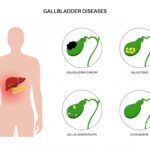By Dr. Parichay Grover, General and Laparoscopic Surgeon at Health Leaf Clinic
A pilonidal sinus is more than just an uncomfortable inconvenience; it’s a condition that can significantly affect a person’s quality of life. Often mistaken for a mere skin infection, a pilonidal sinus is actually a small cyst or abscess that develops in the cleft at the top of the buttocks. Its prevalence is notable among young adults and can disrupt daily activities due to the pain and discomfort it causes. Understanding this condition is crucial, as early detection can lead to more effective and less invasive treatments.
Symptoms of Pilonidal Sinus
Pilonidal sinus manifests through various symptoms, which can sometimes be mistaken for other conditions. The most overt sign is pain at the bottom of the spine, which can worsen while sitting or performing activities that exert pressure on the tailbone area. Other symptoms include:
- Noticeable swelling and a palpable lump near the tailbone.
- Redness and tenderness, indicating inflammation in the affected area.
- Pus or blood draining from a small opening in the skin, often accompanied by a foul odor.
- Discomfort during bowel movements or physical activities.
- Fever or a general feeling of unwellness, suggesting an infection.
Prompt medical evaluation is essential if you notice any of these symptoms, as they can also be associated with other serious conditions.
Causes and Risk Factors
Understanding the etiology of a pilonidal sinus is key to prevention and treatment. The exact cause is not entirely clear, but it’s believed that ingrown hairs play a significant role. These hairs can create a foreign body reaction, leading to the formation of a cyst or abscess. Other contributing factors include:
- A sedentary lifestyle, which increases the duration of sitting and pressure on the coccygeal area.
- Excess body weight, contributing to skin folds and friction.
- Excessive body hair, which can increase the risk of hair penetrating the skin.
- A family history of pilonidal sinus, indicating a possible genetic predisposition.
- Poor hygiene or excessive sweating, which can irritate the skin and hair follicles.
Diagnosing Pilonidal Sinus
Diagnosis is primarily clinical, based on symptoms and physical examination. Your healthcare provider will look for signs of infection and the characteristic pit or opening of the sinus. In cases where the diagnosis is not clear-cut, imaging studies such as ultrasound or MRI might be employed to rule out other conditions and assess the extent of the sinus.
Treatment Options
The treatment approach for a pilonidal sinus depends on the severity of the condition. Mild cases may respond well to conservative measures such as:
- Antibiotics to address infection.
- Application of hot compresses to alleviate pain and facilitate drainage.
- Regular hair removal to prevent hair from entering the sinus.
- Phenol injections, a minimally invasive procedure that can help to harden and close the sinus tract.
For more severe or recurrent cases, surgery is often the most effective treatment. Various surgical options are available, ranging from simple incision and drainage to more complex procedures like flap reconstructions. The aim is to remove the sinus tract, eliminate any infection, and prevent recurrence.
Recovery and Aftercare
Recovery from pilonidal sinus treatment, especially surgery, requires diligent aftercare to prevent complications and recurrence. This includes:
- Keeping the area clean and dry to prevent infection.
- Regularly changing any dressings to keep the wound site clean.
- Avoiding sitting for prolonged periods to reduce pressure on the healing area.
- Following a tailored hair removal plan to minimize the risk of recurrence.
Postoperative care may also involve pain management strategies and guidance on resuming normal activities safely.
Awareness and education are crucial in managing pilonidal sinus effectively. Early intervention can significantly improve outcomes and prevent the progression to more complicated stages. At Health Leaf Clinic, our approach is to provide patient-centered care, utilizing the latest minimally invasive surgical techniques to ensure the best outcomes with the quickest recovery time possible. If you’re experiencing symptoms of a pilonidal sinus, don’t hesitate to reach out for a consultation to explore your treatment options.





